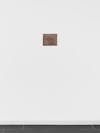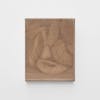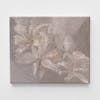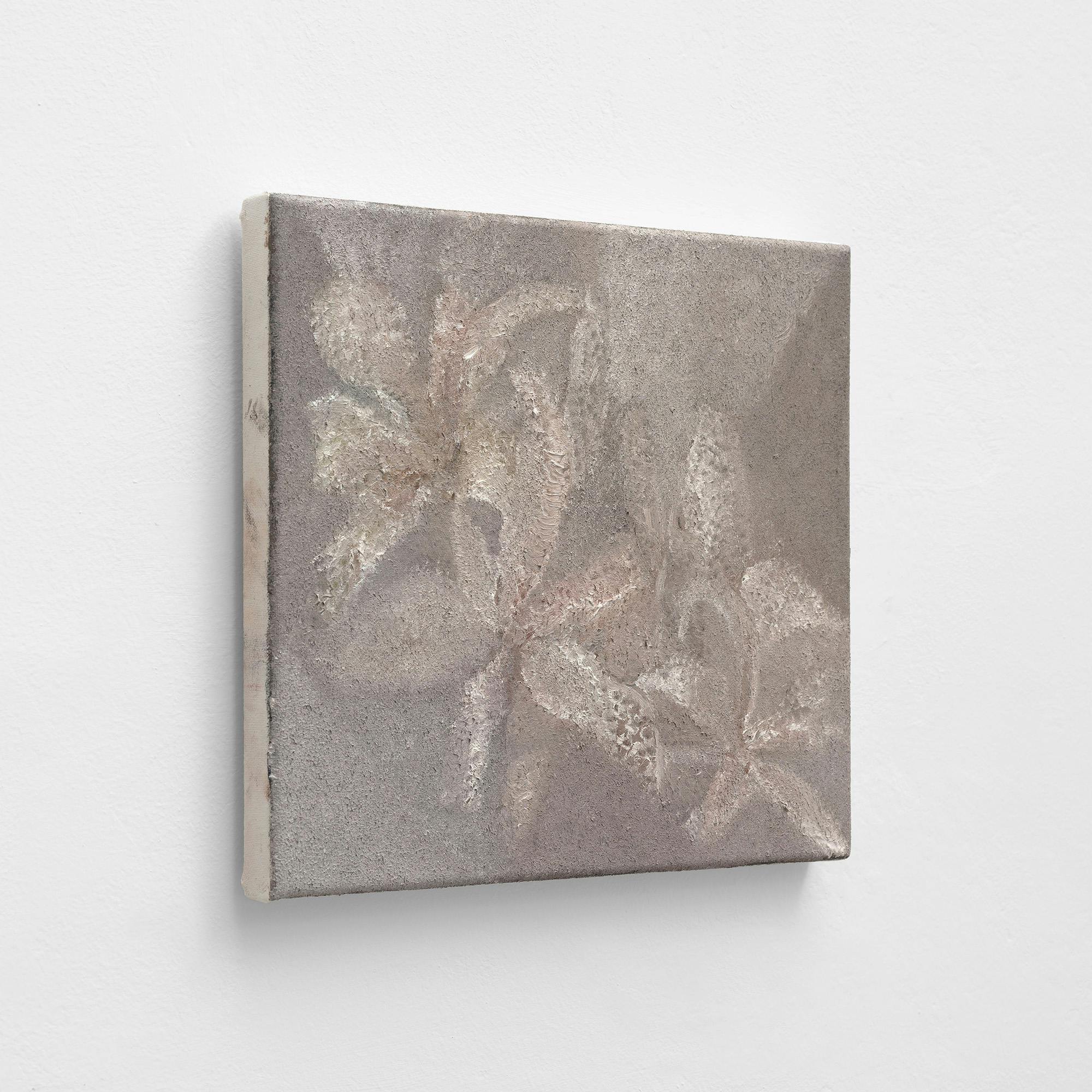Susan Sontag in her seminal book, On Photography wrote that the differing disposition of painters and photographers is that while ‘the painter constructs, the photographer discloses.’ Marta Ravasi, whose longstanding fascination with the still life, fuses an acute and attuned lens akin to a photographer’s, but with the same preoccupation with the surface as a painter. Sontag also writes that photographs ‘allow us to reflect on the passage of time and the nature of experience’, but for Ravasi, the act of painting does the very same, making her own lived experiences personal through indelible marks left behind on the canvas.
Contrary to their initial viewing, Marta’s paintings aren’t painted from life. Conceived from amalgamating imagery she either photographs or rummages for online, she then stores them inside a wicker basket, ready to be pulled out upon an idea. Quite often certain sights recall a recent or distant memory – the apricots, for instance, relive the moment she gave her child their first plate of them. She will then often repaint the scene, sometimes even years apart, from a revised angle, or with subtly varying brushwork. It comes as no surprise that the artists she looks to for inspiration often adhere to a singular subject over many sittings; with his bleached studies of eyes, and her similarly achromatic line paintings, or stencilled canvases in which the word ‘SEX’ is repeated in varying colours.
Tuymans preaches that repetition helps to investigate the infinite possibilities of a singular image, noting that, 'it’s a way to test how much it can hold, how much it can take before it breaks.’ For Marta, the act of re-painting helps to reinstate a deeper sense of longing for her subject, a methodology adopted by painters or who spent careers exploring one idea. Throughout Marta’s career up to now, the palette has largely stayed the same, busy with tones of umber and deep purples, as if all are cast inside the same lowly lit room. Like another of her inspirations, , they share an appreciation for quotidian still lives, isolating everyday forms like fruit bowls or flowers into central motifs.
She also finds motivation in paintings, in which his surroundings are rendered in purely geometric shapes. In Marta’s paintings an ecology of geometric lines and workings hide behind the top layer. Unlike a fresco that slowly fades over time, the paintings in Solo Geometry are stiffened, their thick mottled texture similar to the surface of pumice made up of pointillist dots. She works on them at the same time, their residing clay-like hue encapsulating a singular passage of time played out in eight different angles, as she searches for the heart of her subject.
References
1
2
3
4
5
6
7























